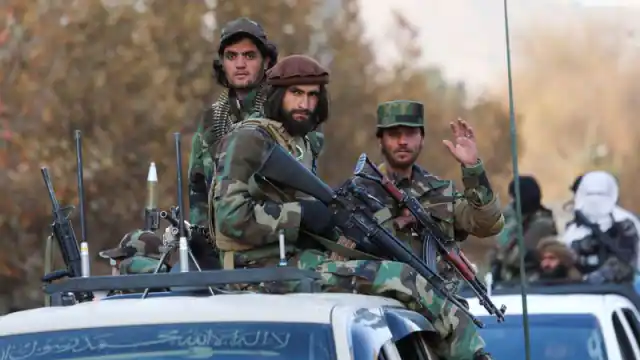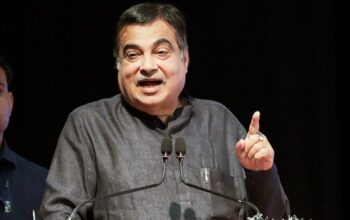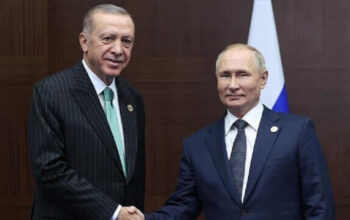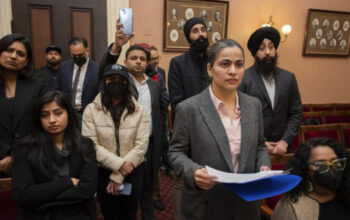Terror groups based in Pakistan Lashkar-e-taiba (let) and Jaish-e-Mohammed (JEM) are present in the Afghanistan which is controlled At the top of the level, according to the latest report on the UN monitoring team in Afghanistan.
The report also stated that Al Qaeda in the Indian subcontinent (AQIS) had between 180 and 400 fighters, including “citizens of Bangladesh, India, Myanmar and Pakistan … located in the provinces of Ghazni, Helmand, Kandahar, Nimruz, Pakakika and Zabul “.
However, it added that while Al Qaeda “enjoyed greater freedom under the new Afghan regime”, “it is impossible to carry out attacks or directly outside Afghanistan for the next one or two years, due to the lack of abilities and restraints of the Taliban”.
The report quoted member countries to state that “JEM maintained eight training camps in Nangarhar, three of them were directly under the control of the Taliban”. Let’s “said to maintain three camps in Kunar and Nangarhar” Andhad “provided financial expertise and training for Taliban operations” before.
The same member country reported that in January 2022, a Taliban delegation visited a training camp used by Let in Haska District Mena Nangarhar,” he said. “In October 2021, according to one member country … let the leader, Mawlawi Assadullah, met with Deputy Minister of the Interior Taliban Noor Jalil,” he said.
The report called JEM as Deobandi’s group which ideologically closer to the Taliban. “The group leader is Masood Azhar, and Qari Ramazan is the new head of JEM who was appointed in Afghanistan,” they said. In Let, the report records: “In Afghanistan, according to one member country, led by Mawlawi Yousuf.”
The monitoring team assisted the UN Security Council Sanctions Committee, and this report was the first since the fall of Kabul in August 2021. circulated among members of the UN Sanctions Committee, the report provided guidance for the UN future strategy of Afghanistan.
At present, India is the Chairperson of the UN Sanctions Committee, and Russia and the UAE are the Deputy Chair-Committee have all 15 UN members.
The report also said that the Taliban “seemed confident in their ability to control the country and” wait “the international community to get ultimately recognition of their government.
According to the report, the power of groups such as ISIL-K has declined, and they are not believed to be able to carry out international attacks before the earliest 2023″.
This report also detailed for the first time the struggle for internal power in the Taliban, the structure of power that emerged in the regime, and weapons and weapons left by US and NATO forces.
Internal tension: This states that around 180 senior Taliban is reportedly traveling for deliberation with Taliban leader Hibatullah Akhundzada for Jirga three days from March 22-24 in Kandahar.
The meeting revealed several divisions in this movement, because consultation on the main policy decisions that ended with Hibatullah who supported the decision to prohibit the education of girls. That exposed Kandahari versus Haqqani, Kandahari versus the Cabinet de Facto, and military competition versus ulama. There are no Tajik or Uzbek representatives, and key figures such as [Minister of Foreign Affairs] Amir Khan Motaqi … Nothing, “said the report.
The leading internal division in the Taliban has been determined by the opposite view between moderate blocks and hardliners. Moderate blocks consist of senior Taliban, including Mullah Baradar, Sher Mohammad Abbas Stanekzai, who believes that the Taliban must be involved in work relations with foreign partners and integrated into the international system, especially global finance, “they said.
The hardline block is said to consist of a senior Taliban centered around Hibatullah Akhundzada, such as Mohammad Hassan Akhund and several other senior Taliban from Kandahar. Hardline blocks have taken a more ideological approach, with fewer emphasis on relations with the international community, “he said.
“Independent, to some extent, from the two blocks is Sirajuddin Haqqani and the Haqqani network that looks closer to the hardline but adopts a pragmatic approach to secure the interests of the Taliban,” they said.
According to the report, the Taliban Kandahari (Durrani) was considered to be in power between the leadership of the Taliban.
Haqqani and Pushback: The report states that the Haqqani network moves quickly to secure the controls of certain main portfolios and ministries: interiors, intelligence, passports, and migration. The position of the leading De facto Minister guaranteed by the Haqqani network included those occupied by the Minister of Home Affairs de Facto Sirajuddin Haqqani and Minister de Facto for refugees Khalil Ahmed Haqqani, according to the report.
Even so, there is a pushback against haqqanis. During Jirga March in Kandahar, they emerged that Haqqanis expects support from improving Sirajuddin to the Deputy Prime Minister. This is not realized. The decision to search for a house to the house in Kabul was carried out without Sirajuddin being consulted and without the commander of Haqqani was released from the search, actions that were seen as challenging the authority of Haqqani, “they said.
Weapons in the Hand of the Taliban: “Some member countries report that the Taliban claims to have 40 operational aircraft. At present, this is believed to cover two MI-17 helicopters confirmed as operations, along with two MD-530 CUSTRY COUNTRY CAHUSE HELICOPTERs, two MI-24 helicopters and one fixed wing transportation aircraft, all of which have been observed to fly, “said the report that.
Flying this aircraft has a propaganda value for the Taliban but a little military utility. For some aircraft in service, the Taliban does not have spare parts, mechanics that are trained to maintain it and, most importantly, the pilot to fly it, “he said.






